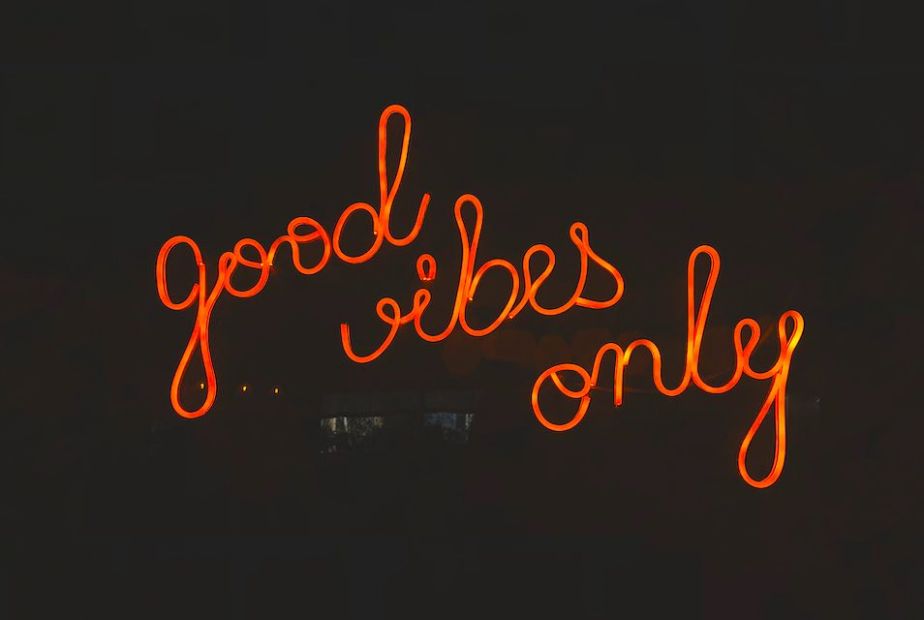Positive Vibes Only.
How many times have you seen those words posted on Instagram as a reminder to push the negative thoughts out of your mind and look on the bright side?
While there are benefits to living life with a
gratitude mindset, approaching life with a “positive vibes only” mentality can actually be harmful. Sounds a bit backward, doesn’t it? Hear me out. It’s called toxic positivity. I know because I’ve experienced it firsthand.
We’ve heard more times than we can count recently that we’re in unprecedented times. The
current state of life is weird, so now, more than ever, we’re trying to stay positive. I recently returned to work after
six weeks of maternity leave, and due to the current pandemic, I quickly became a mom working at home with a newborn. It went about as well as you could imagine it would go.
Even with sharing the parenting responsibilities with my husband, who was also
working from home, and with family members, it was challenging. My husband and I found ourselves between a rock and a hard place.
We could continue to work from home unproductively with our newborn and feel frazzled and overwhelmed, or we could put him in daycare in the midst of a global pandemic.
But then a thought crossed my mind: I should be happy that I’m able to spend this time with my child. If everything went as planned, I would already be back in the office without him, so this extra time together is a silver lining. I immediately felt guilty for even thinking of putting him in daycare.
"I figured it’s best to suffer through giving 50 percent of myself to work and 50 percent of myself to my baby because it’s better than him spending the workweek in the care of someone else."
This guilt I felt is a prime example of toxic positivity. I felt the pressure to be positive and find the good in a situation that, in all honesty, just sucked. Ultimately, I confronted my emotions, let myself feel what I was feeling, and I put my child in daycare.
What Is Toxic Positivity?
According to Positive Psychology Expert and Transformational Life Coach,
Tallia Deljou, “Toxic positivity refers to when we minimize and neglect the entirety of the human experience when it comes to emotions and what we give ourselves permission to feel.”
Toxic positivity assumes that having a positive mindset is the only mindset because by ignoring difficult and negative emotions, we think we’ll be happier.
This type of thinking leads to invalidation because we try to override or reject
existing negative and unpleasant emotions because they are seen as inherently bad. Since these emotions are viewed negatively, we push the positive vibes and happiness, causing an inauthentic human emotional experience.
Why "Positive Vibes Only" Is Harmful
While suppressing negative emotions and
focusing only on the positive in theory sounds good, humans are meant to experience emotions—all of them.
From happiness to sadness to anger and jealousy, as humans, we are made to experience and feel things across a broad spectrum.
Focusing excessively on positivity and the overgeneralization of happiness is toxic because we deny ourselves an authentic human experience.
Toxic positivity and living our life with a “positive vibes only” mentality denies us the ability to effectively process our emotions and leads to invalidation.
Validation allows space for a person’s emotional state to exist, regardless of whether or not we agree with that person’s circumstances. It’s a
vital communication tool and an expression of acceptance. Invalidation is the opposite.
It denies, rejects, or dismisses a person’s feelings, making them feel insignificant and as though their feelings are inaccurate. Whether intentional or not, invalidation is emotionally damaging.
“When someone in the face of a threat or a danger is told to feel positive emotion and just be happy or just be cheerful instead, they’re actually (1) going to be more inclined towards risky behaviors, and (2) actually neglecting vital information around their security and safety,” Tallia notes.
So, when you are happy all the time or try to be happy all the time, you’re neglecting significant threats and dangers that the negative emotion is trying to signal.
In addition to invalidating emotions, this type of toxic behavior attaches shame to struggle. When you express a negative emotion to someone, and they meet your sadness or frustration with a positive vibe mentality, you’re likely to recoil.
Feeling shame will lead to distress and feelings of worthlessness in moments of struggle.
This toxic behavior becomes emotionally harmful because we’re suppressing our true feelings and remaining silent during our times of struggle. Pushing aside and refusing to process negative emotions then creates more
feelings of negativity and creates a toxic mental state.
Another reason toxic positivity is harmful, according to Tallia, is because it sets up happiness and positivity as the main goal.
“When that is the main goal and the pursuit of happiness is the main goal, we’re actually setting ourselves up for disappointment because happiness is not a goal to be achieved. It is not something that we can feel forever. It’s a fleeting emotion,” she says.
The act of emoting through words and body language, like facial expressions, is crucial to acknowledge the existence of our emotions, keeping us emotionally healthy and helping to relieve stress.
The Difference Between Toxic Positivity and Positive Validation
Instead of solely promoting positive vibes, the better option is to meet negative emotions with positive validation. Positive validation accepts a person’s feelings as they are. This acknowledgment leads to acceptance, as opposed to toxic positivity that leads to rejection.
“We forget that negative emotion serves a very important role in problem-solving and in feeling whole and human. We can’t go without acknowledging our pain. We can’t go living in this all-or-nothing, black or white. It just doesn’t work because it takes away from what is available to us if and when we allow ourselves to tap into all the other emotions along the spectrum,” Tallia explains.
"Toxic positivity, while often well-intentioned, is a toxic behavior that does more harm than good."
The best way to illustrate the difference between toxic positivity and positive validation is through an example. Let’s say someone approaches you about a
difficult situation they’re encountering with a coworker.
- Instead of promoting positive vibes by saying something like, “It’ll all work out,”
- Try using a form of positive validation like, “That really sucks. I’m sorry you’re going through that.”
Positive validation creates space to express and process emotions, which leads to healthier headspace. Toxic positivity, while often well-intentioned, is a
toxic behavior that does more harm than good.
Common Toxic Positivity Slogans (+ What to Say Instead)
Often, the intent behind toxic positivity is actually good.
The next time you want to hold space for someone else’s emotions, try substituting an accepting, positive validation statement for a statement of toxic positivity.
Instead of saying "Good vibes only."
Try this: “All vibes are welcome here.”
Instead of saying “Everything happens for a reason.”
Try this: “Sometimes life doesn’t go as planned. How can I support you during this tough time?”
Instead of saying "Difficult situations only make us stronger.”
Try this: “That sounds hard. I’m thinking of you.”
Instead of saying “No excuses.”
Try this: “We all handle situations differently. It’s okay if you need to take a break or a step back.”
Instead of saying “Just don’t think about it.”
Try this: “I’m here to listen. Tell me how you’re feeling.”
Instead of saying “Hustle harder.”
Try this: “I see that you’re stressed. How can I help?”
Common Signs of Toxic Positivity at Work + How to Shut It Down
Toxic positivity can rear its ugly head in both your personal life and at work, and it’s something that you can both be guilty of and you can experience. The best place to start shifting from an environment of toxic behavior to
positive validation is with yourself.
Be cognizant of your language in conversations with coworkers and your boss and be intentional about how you react and respond to their feelings.
Tallia explains that, “When problems do arise, you’re going to want to feel negative emotion because that’s an indication that there is a problem. That’s when you know something is wrong because you tune into the emotions that come up, and it signals to you that something needs to happen here. So emotions like fear and anger might actually be more beneficial than optimism because it actually motivates you to take action and make a change.”
Here are common signs of toxic positivity in the workplace and tips on how to shut it down.
Masking Your Real Feelings
Do you find yourself saying “it’s fine” or “no really, it’s all good” in the workplace?
This could be a sign of self-directed toxic behavior. Covering up your true feelings instead of
expressing how you feel can make matters worse.
Let’s be honest: every situation isn’t going to be great. Work is called work for a reason. There will be plenty of times when it’s challenging and you’re faced with difficult situations. Grinning and bearing it will only leave you stressed out and overwhelmed.
Shut down this form of toxic positivity by expressing yourself. Get it all out—the good, the bad, and the ugly. You’re not doing yourself or anyone else any favors by hiding what you really feel.
Feeling Guilty for Feeling Negative Emotions
Toxic positivity can manifest itself as guilt. You may think you have no right to feel negatively in a situation because everything else in your life is good. That kind of toxic behavior invalidates your feelings and stacks another negative emotion on top of what
you’re already experiencing.
To combat this, understand that your feelings are valid. Just because everything else at work is going great doesn’t mean you don’t have the right to feel overwhelmed or anxious about a current project or upcoming meeting.
This goes both ways, too. If a coworker approaches you and expresses how they feel, don’t say things like, “It’s fine. Your job is so easy” or “No one likes a negative Nancy.” Validate their feelings. It’s best not to tell people how they should or should not feel, especially at work.
Validation of their feelings will signal to them that you’re someone they can talk to about their problems and creates space to remove any guilt they may already be experiencing.
Minimizing Experiences With a “Positive Vibes Only” Statement
Picture this: you walk out of a presentation that was a total disaster. You know it, and the attendees know it.
But shortly after, your coworker who was also in the meeting approaches you and says, “It wasn’t that bad. I bet other people have bombed way worse.” While well-intentioned, these statements deprive the presenter of freely feeling their emotions.
Minimizing negative experiences prevents us from emoting, which leads to avoidance of feelings. When we can’t express ourselves, it causes stress and, in situations like this, shame. Shame is uncomfortable and crippling.
It may make you feel like you’re not good enough or capable of doing your job.
Combat this type of toxic positivity by dealing with it head-on. Acknowledge your
failures and shortcomings, learn from them, and move on. No need to dwell on the negative, but you do need to confront it.
Remember, the best way to foster a positive environment in the workplace is to hold space for everyone, including yourself, to freely express themselves.














